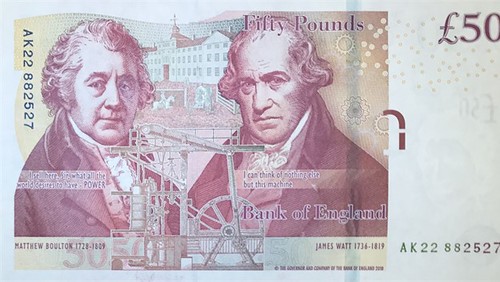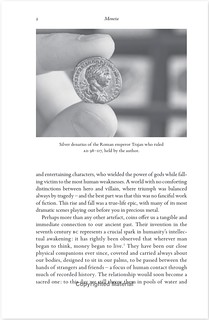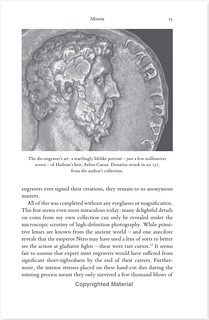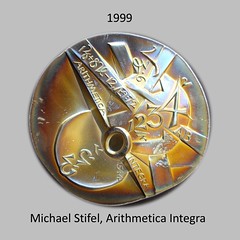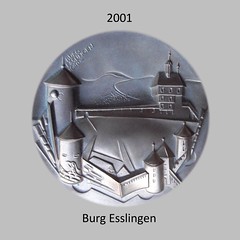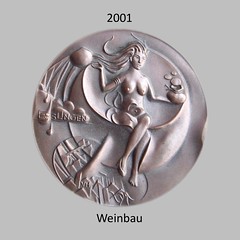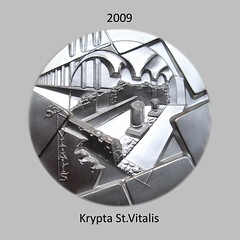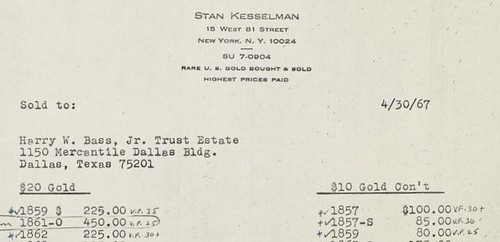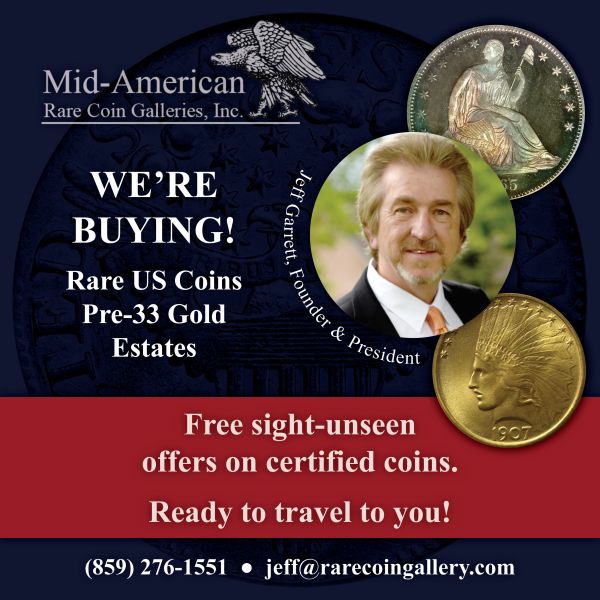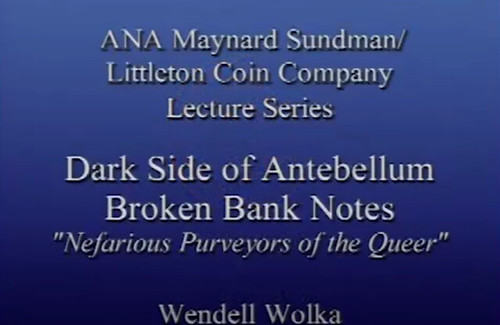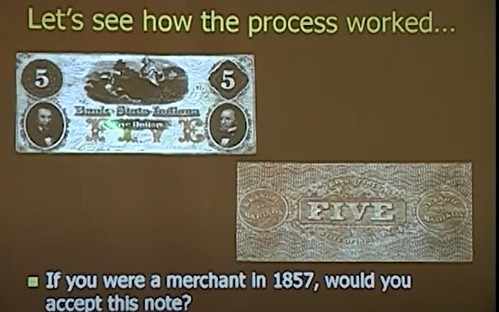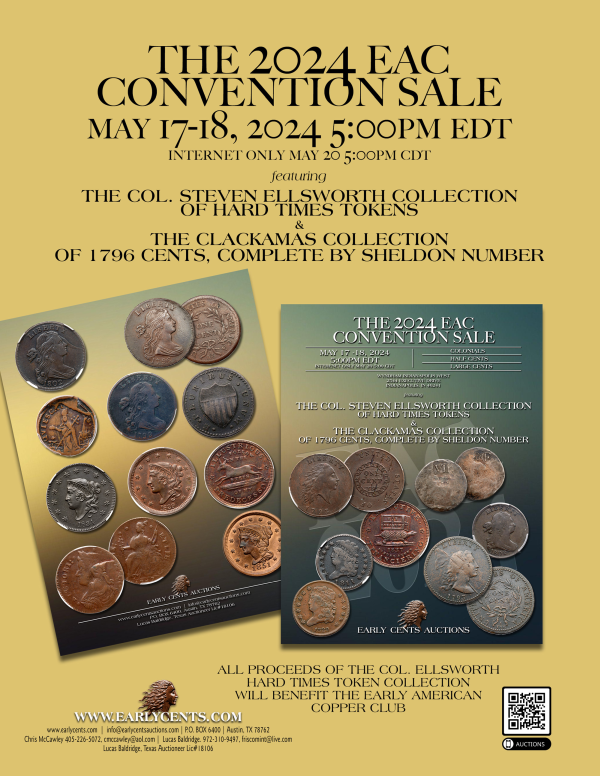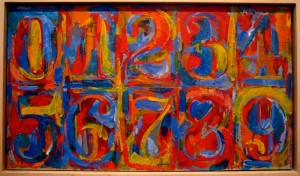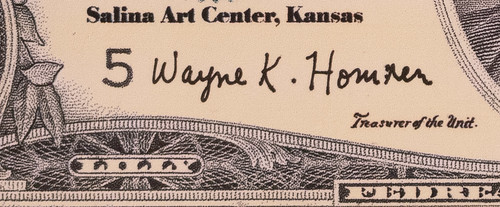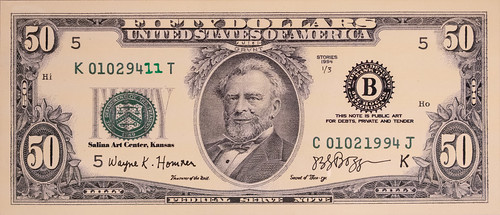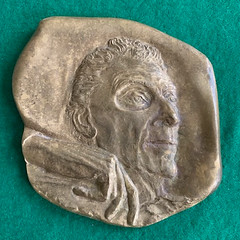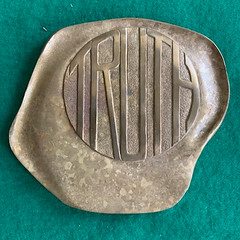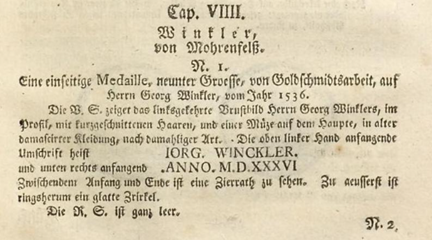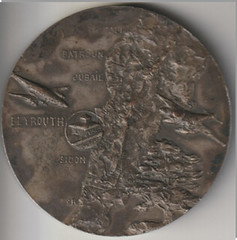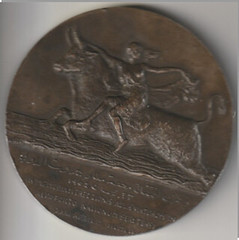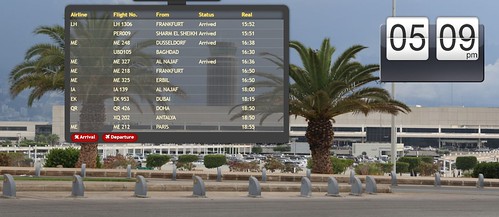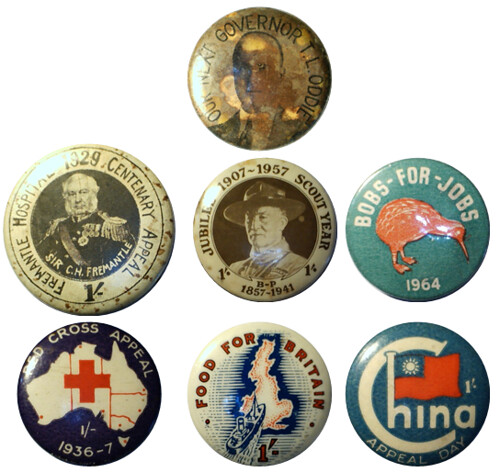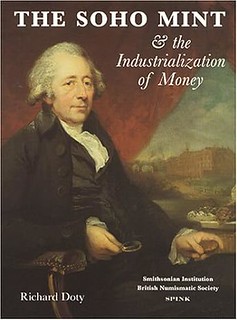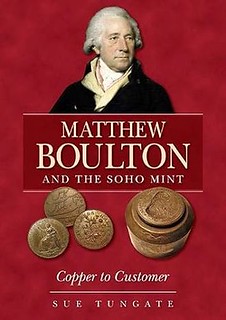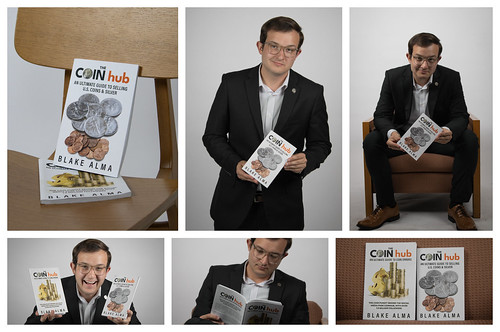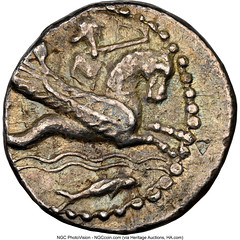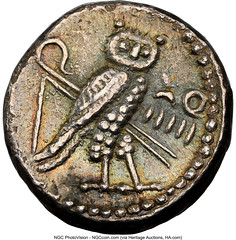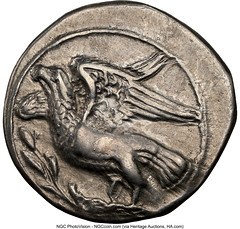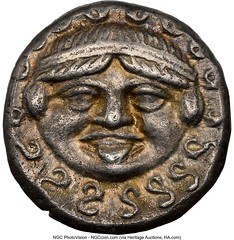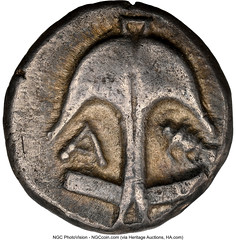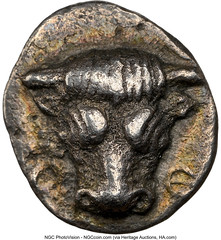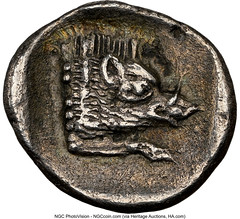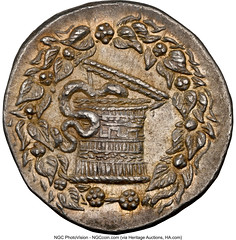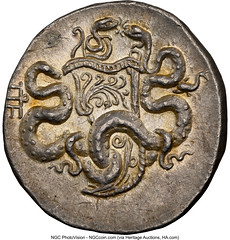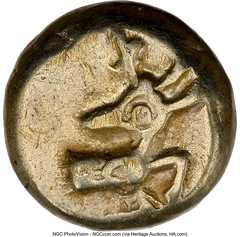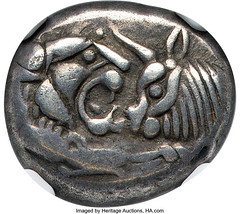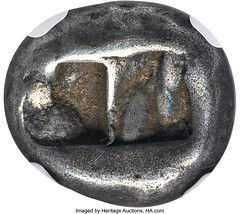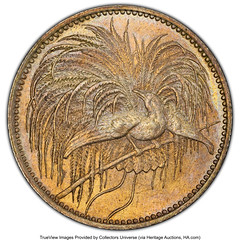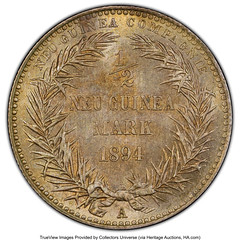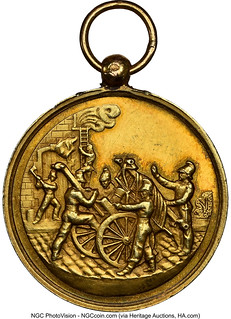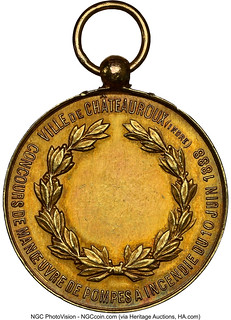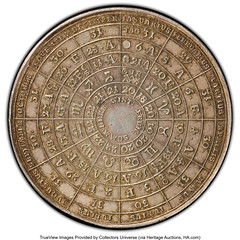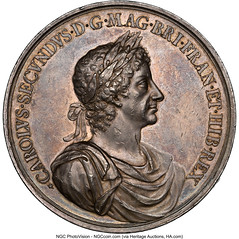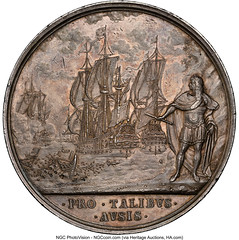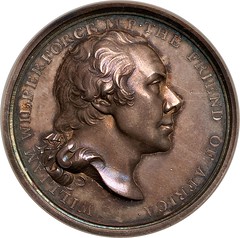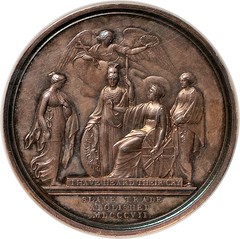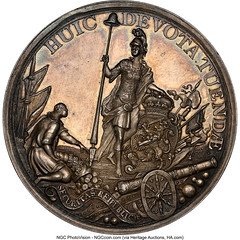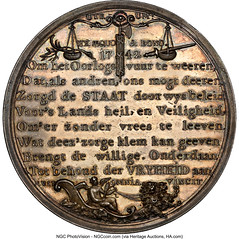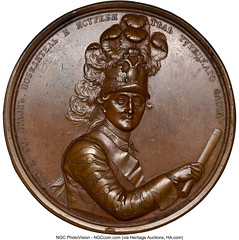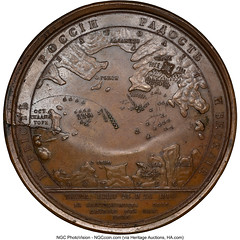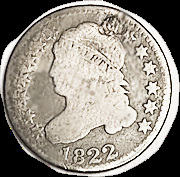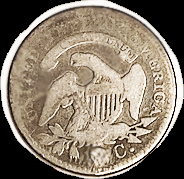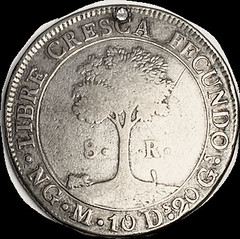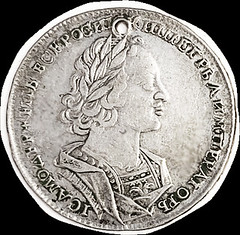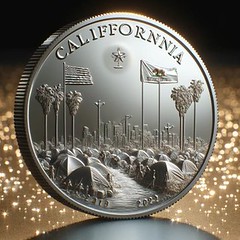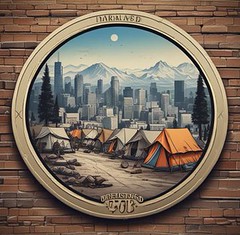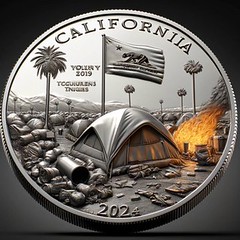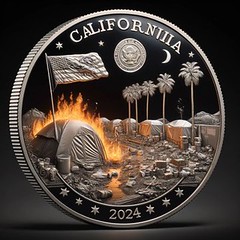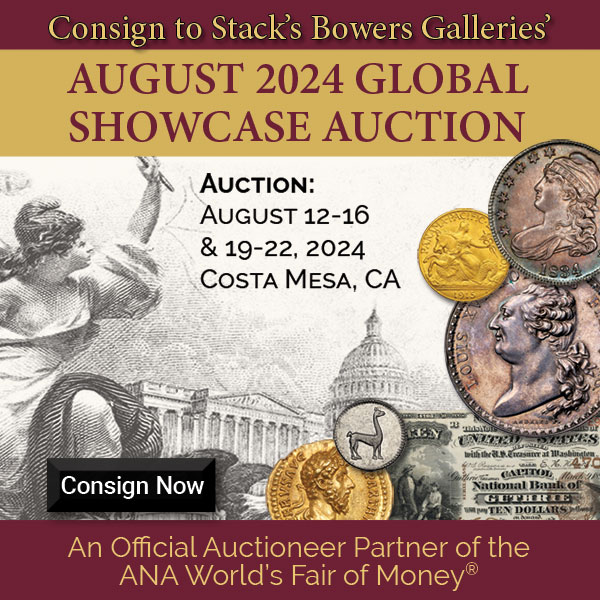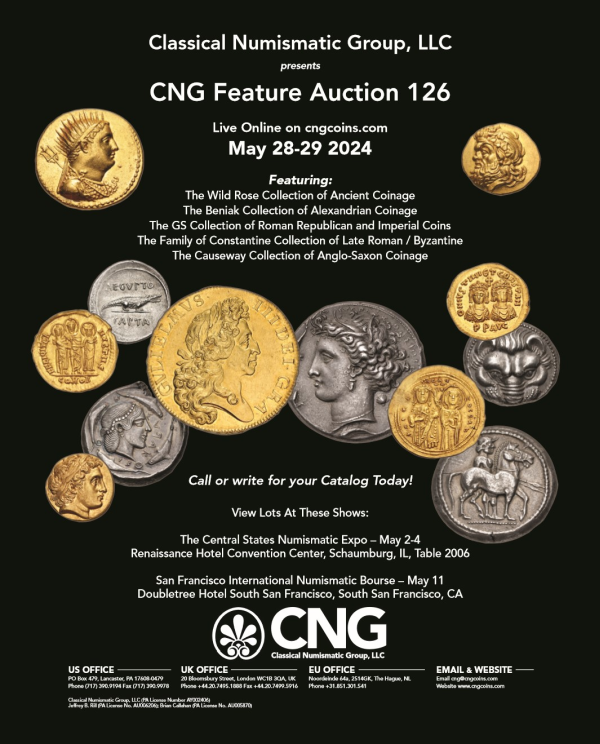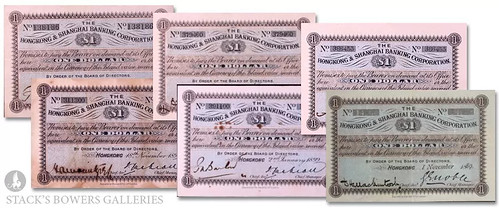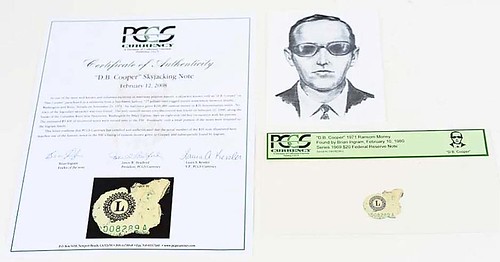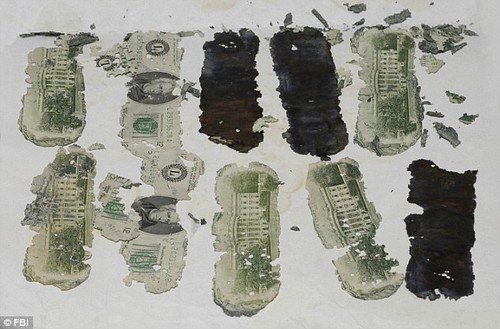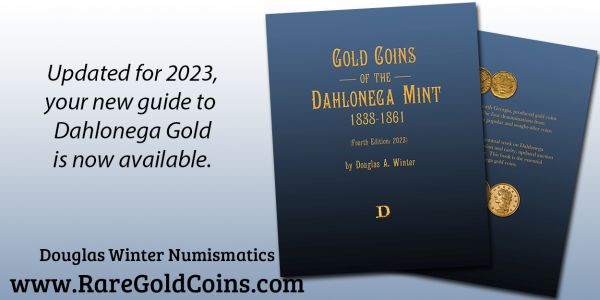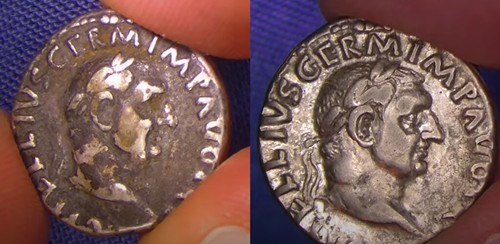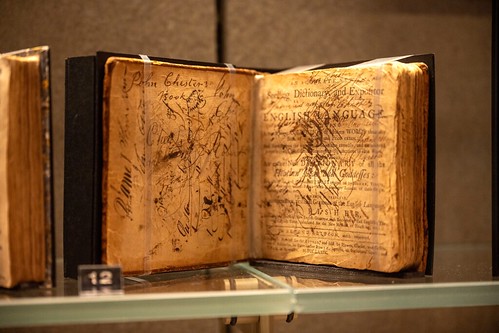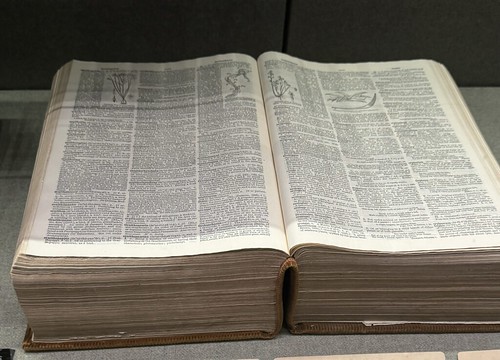
Visit our NBS Sponsors
About UsThe Numismatic Bibliomania Society is a non-profit association devoted to the study and enjoyment of numismatic literature. For more information please see our web site at coinbooks.org SubscriptionsThose wishing to become new E-Sylum subscribers (or wishing to Unsubscribe) can go to the following web page link MembershipThere is a membership application available on the web site Membership Application To join, print the application and return it with your check to the address printed on the application. Print/Digital membership is $40 to addresses in the U.S., and $60 elsewhere. A digital-only membership is available for $25. For those without web access, write to: Jeff Dickerson, Treasurer AsylumFor Asylum mailing address changes and other membership questions, contact Jeff at this email address: treasurer@coinbooks.org SubmissionsTo submit items for publication in The E-Sylum, write to the Editor at this address: whomren@gmail.com BUY THE BOOK BEFORE THE COIN |
- WAYNE'S WORDS: THE E-SYLUM MAY 12, 2024
- NEW BOOK: MONETA: ANCIENT ROME IN TWELVE COINS
- NEW BOOK: CORPUS OF MUGHAL COINS OF INDIA, VOL 2
- NEW BOOK: ESSLINGEN ART MEDALS
- STAN KESSELMAN PAPERS ON NEWMAN PORTAL
- VIDEO: ANTEBELLUM BROKEN BANK NOTES
- ON ERROR COLLECTING
- CONECA TO EXAMINE ERROR AND VARIETY COINS
- COMMENTS: WHY BOGGS? WHY NOW?
- NOTES FROM E-SYLUM READERS: MAY 12, 2024
- BOULTON & WATT 250TH ANNIVERSARY
- VOCABULARY TERM: PLAQUETTE
- RICHARD W. SUTER
- MORE ON BLAKE ALMA'S NEW BOOK
- HERITAGE AUCTIONS: FROM FAUNA TO FABLES
- HERITAGE MAY 2024 MEDALS & TOKENS SELECTIONS
- FRANK ROBINSON OFFERS
HOLEY COLLECTION"
- CALIFORNIA COIN CONTEST COMEDIANS
- HAYM SALOMON BRONZE MINI-MEDAL OFFERED
- HONG KONG
SMALL CHEQUE
DOLLAR NOTES - D.B. COOPER RANSOM REMNANT SELLS
- LOOSE CHANGE: MAY 12, 2024
- AUSTRALIA'S MACQUARIE BANK DITCHES CASH
- HISTORY OF THE ENGLISH DICTIONARY
- FEATURED WEBPAGE: 19TH CENTURY SILVER INGOTS
Content presented in The E-Sylum is not necessarily researched or independently fact-checked, and views expressed do not necessarily represent those of the Numismatic Bibliomania Society.
WAYNE'S WORDS: THE E-SYLUM MAY 12, 2024
 New subscribers this week include:
Welcome aboard! We now have 7,264 subscribers.
New subscribers this week include:
Welcome aboard! We now have 7,264 subscribers.
Thank you for reading The E-Sylum. If you enjoy it, please send me the email addresses of friends you think may enjoy it as well and I'll send them a subscription. Contact me at whomren@gmail.com anytime regarding your subscription, or questions, comments or suggestions about our content.
This week we open with three new books, updates from the Newman Numismatic Portal, error collecting, and more.
Other topics this week include art medals, broken bank notes, Boulton & Watt, plaquettes, coins with holes, Hong Kong small cheque notes, D. B. Cooper ransom notes, and a big bank going cashless.
To learn more about ancient Rome in twelve coins, the Mughal coins of India, Stan Kesselman, Haym Salomon, CONECA, the "Treasurer of the Unit", the Wells Fargo History Museum, the Soho Mint, How Not to Get Ripped Off in the Coin Business, animals on ancient coins, a calendar medal, and "Nefarious Purveyors of the Queer", read on. Have a great week, everyone!
Wayne Homren
Editor, The E-Sylum
NEW BOOK: MONETA: ANCIENT ROME IN TWELVE COINS
If you could pick just twelve ancient roman coins, which would you choose? Twelve Caesars? Been done to death. How about twelve coins representing the entire history of the Roman empire? This new book uses coins as a portal to ancient times. -Editor
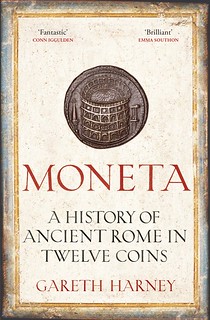 Moneta
Moneta
A History of Ancient Rome in Twelve Coins
By Gareth Harney
The extraordinary story of ancient Rome, history's greatest superpower, as told through humankind's most universal object: the coin.
- 'Fantastic' CONN IGGULDEN, author of Nero
- 'Brilliant' EMMA SOUTHON, author of A History of the Roman Empire in 21 Women
- 'Wonderful' CHRISTOPHER HADLEY, author of The Road
Moneta traces ancient Rome's unstoppable rise, from a few huts on an Italian hilltop to an all-conquering empire spanning three continents, through the fascinating lives of twelve remarkable coins. In these handcrafted pieces of ancient art we witness Caesar's bloody assassination, follow the legions to the edge of the known world, take a seat in the packed Colosseum, and ultimately, watch as barbarian armies mass at the gates.
The Romans saw coins as far more than just money – these were metal canvases on which they immortalised their sacred gods, mighty emperors, towering monuments, and brutal battles of conquest. Revealed in those intricate designs struck in gold, silver, and bronze was the epic history of the Roman world.
Hold the glory and the infamy of ancient Rome in the palm of your hand.
Imprint: Bodley Head
Published: 09/05/2024
ISBN: 9781847927507
Length: 384 pages
Dimensions: 242mm x 35mm x 162mm
Weight: 616g
Price: £22.00
For more information, or to order, see:
Moneta: A History of Ancient Rome in Twelve Coins
(https://www.penguin.co.uk/books/453999/moneta-by-harney-gareth/9781847927507)
NEW BOOK: CORPUS OF MUGHAL COINS OF INDIA, VOL 2
Volume 2 in a series of books on the Mughal Coins of India has been published. -Editor
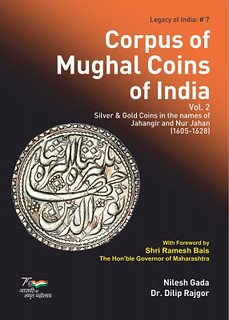 Corpus of Mughal Coins of India, Volume 2: Silver and Gold Coins in the names Of Jahangir and Nur Jahan
Corpus of Mughal Coins of India, Volume 2: Silver and Gold Coins in the names Of Jahangir and Nur Jahan
Nilesh Gada (Author)
Dilip Rajgor (Author)
Legacy of India
Corpus of Corpus of Mughal Coins of India is a series of six volumes. Mughal Coins The Corpus deals with all the coins issued by Mughal Emperors within modern countries of India, Pakistan, Afghanistan, Uzbekistan, Tibet, Nepal & Bangladesh from 1526 to 1858. These coins include not only all the coins issued by the Mughal Emperors, but also all the coins issued by provincial rulers in the name and style of these Mughal Emperors. These include Independent Kingdoms, Princely States and East India Company.
Coins of each ruler are appended with actual photographs of a coin of both the sides. This has been supplemented along-with eye copies of the Persian legends as seen on the coins. For this black calligraphy pen is used to over-write on each segment of the legends on a coin. This helps in understanding how the legends or couplets on a given coin are arranged. This is followed by in depth details of both the sides of a coin. For this, coin legend is written in Persian script to indicate the flow of the legends on the coin. To make it clear and lucid, a transliteration of the Persian script is also given in English.
Vol. 2 comprises of silver and gold coins issued by sixth and seventh Mughal rulers, viz. Jahangir and his Queen Nur Jahan. The eighth ruler Shahryar is known to have minted his own coins from Lahore Mint but still they are not known.
For more information, or to order, see:
Corpus of Mughal Coins of India, Volume 2: Silver and Gold Coins in the names Of Jahangir and Nur Jahan
(https://www.bagchee.com/books/BB137893/corpus-of-mughal-coins-of-india-volume-1-silver-gold-coins-in-the-names-of-babur-humayun-kamran-and-akbar-15261605)
To read the earlier E-Sylum article, see:
NEW BOOK: CORPUS OF MUGHAL COINS OF INDIA, VOL 1
(https://www.coinbooks.org/v26/esylum_v26n41a04.html)
NEW BOOK: ESSLINGEN ART MEDALS
The city of Esslingen, Germany issued a series of 26 art medals depicting local history and architecture from 1997 to 2009. a new book by medallist Victor Huster documents the series. Here's the announcement. -Editor
Portrait of a city
The series of art medals has now been published as a book
A series of art medals reflecting the culture and history of the former Free Imperial City of Esslingen am Neckar was created over a period of 13 years. These 26 outstanding works of art in terms of design and minting technique are now documented in a printed book.
The 65-page ensemble is based on in-depth thematic research and intensive design work. Executed using elaborate minting techniques, the result is a unique city portrait that is unrivalled in the world of German medals. In addition to architecture and historical milestones, the range of themes also includes selected personalities and examples of local industrial development. The series, which grew from 1997 to 2009, is due not least to the ongoing commitment of Kreissparkasse Esslingen.
At the end of the book, a list shows all the technical details and the amount of the individual medal editions. For some motifs, there are identical gold casts in a smaller format, which are very rare. All specimens are in the Coin Cabinet of the Württemberg State Museum in Stuttgart, as are some of the dies.
The aim of the publication is to make these medals accessible to future generations, to preserve the descriptions of the motifs and to protect the objects from the vandalism of melting. The appreciation should not be based on the metal value, but on the spiritual content and uniqueness.
The book is available at a price of 35 euros (incl. 7% VAT) plus 4 euros postage.
Order by e-mail to info@victor-huster.de
For more about the series of Esslingen art medals, see:
Esslinger-Serie
(https://www.victor-huster.de/esslinger-serie-2/)
Here are some examples that caught my eye. -Editor
STAN KESSELMAN PAPERS ON NEWMAN PORTAL
The latest addition to the Newman Numismatic Portal is the Stan Kesselman Papers. Project Coordinator Len Augsburger provided the following report. -Editor
Stan Kesselman Papers on Newman Portal
In between the mass of public advertisements and named auction catalogs, a few dealers operate quietly, facilitating the placement of important numismatic items into equally important collections. One of these dealers was the New York numismatist Stan Kesselman. Among others, Kesselman worked with Harry W. Bass, Jr. to build a historic collection of U.S. gold coinage, which was ultimately featured in auction sales by Bowers & Merena (1999-2000) and Heritage Auctions (2022-2023). Other clients included the large cent collector Roy Naftzger.
Business records of Kesselman, primarily invoices with an emphasis on gold coins, are currently being digitized by Newman Portal. Occasional correspondence is also present, such as a letter from Bass to Kesselman, January 19, 1968, which alludes to the never-ending negotiation between dealer and client: I agree - once you pay too much, it sets you up for life. With you by now I must have set myself up for a hundred lifetimes. Since I have paid you too much so many times in the past, why shouldn't I continue so doing in the future? My problem with you is that you now know how much you can get away with. I don't need salt for my wounds but rather balm as well as a solution to my problem.
Newman Portal acknowledges Stan Kesselman for making this material available, and Julian Leidman for coordinating delivery to Newman Portal. Following digitization, the material will be presented to the ANA Library.
Image: Kesselman invoice to Harry W. Bass, Jr., April 30, 1967
Link to Stan Kesselman papers on Newman Portal:
https://nnp.wustl.edu/library/archivedetail/552738
VIDEO: ANTEBELLUM BROKEN BANK NOTES
The David Lisot Video Library on the Newman Numismatic Portal can be found at:
https://nnp.wustl.edu/library/multimediadetail/522852
We highlight one of his videos each week in The E-Sylum. Here's one from 2005 with Wendell Wolka speaking about paper money before the Civil War-era Federal issues. -Editor
Dark Side of Antebellum Broken Bank Notes
Learn about the paper money before the Federal issues. You will learn:
- Uncertainty of accepting Wildcat Era bank notes
- The ease of creating paper money
- How to determine whether the bank itself was good
- Publications that listed "bad" banks
- Use of counterfeit detectors
- Ways to tell a counterfeit vs. Genuine bank not
- Types of counterfeiting
Speaker: Wendell Wolka. Recorded at the 2005 summer ANA convention.
To watch the complete video, see:
Dark Side of Antebellum Broken Bank Notes
(https://youtu.be/rNo9SJMqirU)
ON ERROR COLLECTING
Vic Mason of Mamaroneck, NY submitted these notes on error coins. Thank you. -Editor
Last week's edition of The E-Sylum highlighted David Lisot's 2005 video of the
scintillating meeting led by Sid Kass and Fred Weinberg about the history and progress of error-coin collecting in this country. Entitled: Early Days of Error Coin Collecting,
the video was
very enjoyable and informative. What a wonderful video archive David Lisot built up at ANA
conventions and other meetings before his untimely passing.
The evolution of error-coin collecting has had such a dramatic impact on the hobby. No one has been more important for popularizing that endeavor than Bill Fivaz and the late J.D. Stanton, thanks to their wonderful series of Cherry Pickers' Guides. It was good to see Mr. Fivaz in that video, then obviously in his vigorous early 70s, bantering with others in the audience.
As the E-Sylum recently reported, Mr. Fivaz this year observed his 90th birthday,
surrounded by dozens of family members and friends. That was where he reportedly thanked
everyone for helping him celebrate the 50th anniversary of my 40th birthday.
Delightful.
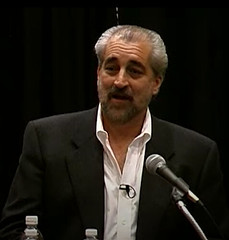 I was fascinated to hear Mr. Weinberg report on his purchase in the mid-1960s of that
trove of around 2000 error coins for $60,000. He said that fully two-thirds of them went
relatively quickly for a total of between $2 million and $4 million, when the collection was broken
up and the coins were sold separately.
I was fascinated to hear Mr. Weinberg report on his purchase in the mid-1960s of that
trove of around 2000 error coins for $60,000. He said that fully two-thirds of them went
relatively quickly for a total of between $2 million and $4 million, when the collection was broken
up and the coins were sold separately.
Discussion on the 2004-D Wisconsin High-Leaf and Low-Leaf Quarters
The videoed meeting discussed the unexpected production a year earlier of the two
unauthorized 2004-D Wisconsin quarters, the so-called High-Leaf and Low-Leaf varieties.
Participants in the meeting speculated on the ability of the United States Mint to get to the
bottom of the creation and production of those two unauthorized varieties.
Some years ago, I bought PCGS-graded MS 65 examples of both varieties. I wondered
whether the US Department of the Treasury ever got to the bottom of that mystery,
so I
phoned Rick Snow of Eagle Eye Rare Coins in Tucson, Arizona, from whom I bought my two
quarters. Rick has been offering the coins on his web site for some time, and he told me the
government has never been able to figure out who was behind the creation and production of
those coins.
Rick added that there is a 2004-D Roosevelt dime variety which is also suspected of
having been created by the same anonymous Denver Mint employee(s). That coin is illustrated
in the Sixth Edition, Volume II, of the Cherry Pickers' Guide at the top of page 117. The Guide
notes: A circular image overlaps the outer rim of the back of Roosevelt's ear.
It then states:
An employee of the Denver Mint may have added the circular image to the die deliberately. Its
size and shape are similar to those of images known on the reverse of the two 2004-D
Wisconsin quarters (High Leaf and Low Leaf varieties).
Thanks, as always, for the good reporting.
To read the earlier E-Sylum articles, see:
CLUB CELEBRATES BILL FIVAZ 90TH BIRTHDAY
(https://www.coinbooks.org/v27/esylum_v27n08a13.html)
VIDEO: EARLY DAYS OF THE ERROR COIN HOBBY
(https://www.coinbooks.org/v27/esylum_v27n18a08.html)
THE BOOK BAZARRE
CONECA TO EXAMINE ERROR AND VARIETY COINS
While we're on the topic of errors, the CONECA organization will be manning tables at upcoming coin shows to examine error and variety coins. Here's the press release. -Editor
at Major Coin Shows Across the USA
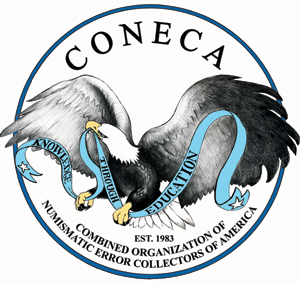 CONECA, the international error coin and variety club, will be offering free examination of error and
variety coins to collectors at educational tables at coin shows across the United States throughout
this year and into next.
CONECA, the international error coin and variety club, will be offering free examination of error and
variety coins to collectors at educational tables at coin shows across the United States throughout
this year and into next.
The club, whose name stands for Combined Organizations of Numismatic Error Collectors of
America,
is the largest coin specialty club in the United States and has actively been educating
collectors about mint error and variety coins for the last five decades.
At their coin show tables, different members of the CONECA Board of Directors and other error / variety enthusiasts (each with different areas of specialty as available) will offer free examination to collectors who bring coins from their collection to the show with questions.
CONECA is devoted to education about errors and varieties and will not be buying or selling coins at their tables. CONECA requests that collectors have an idea of what they are asking about on the coins they bring to the shows, to allow for as many collectors as possible to have a chance to have their coins examined.
There will be a CONECA table at the Spring Pennsylvania Association of Numismatists (PAN) show
May 15th-18th 2024.
https://pancoins.org
The club will have a table at both the 18th Annual summer FUN show (Thursday to Saturday, July 11-13, 2024 in Orlando Florida ) at the Orange County Convention Center, 9800
International Drive, in Hall WA1, Orlando Florida.
http://www.funtopics.com/
There will also be a CONECA table at the World's Fair of Money, August 6-10 th 2024 in Rosemont IL
at the Donald E. Stephens Convention Center:
https://www.money.org/worldsfairofmoney/
There will also be a CONECA representative available on the west coast at the Pacific Northwest
Numismatists show in Tukwila Washington, October 4-6 th 2024 with details to follow about whether
this will be an actual table or a rep onsite able to help.
https://www.pnna.org/wp/events/fall/
CONECA can be found online at
https://conecaonline.org
COMMENTS: WHY BOGGS? WHY NOW?
Several comments have come in on the video of my recent talk on money artist J.S.G. Boggs at Washington University in St. Louis. -Editor

Clifford Mishler writes:
"I enjoyed sitting in on your Boggs program at Central States."
Bill Eckberg writes:
"Really great talk. You were very natural and gave great information.
"For some reason, despite my interest in numismatics, art and science, I missed learning about him. I wish I had."
Gosia Fort writes:
"I loved it. You made me sit glued to the computer screen soaking your every word. Sure Boggs was an interesting person and I have heard you talking about him before, but this lecture was absolutely wonderful. What a delivery!"
Others wrote:
"I have watched your presentation. Very educational."
"While I have been enjoying all of the presentations, I enjoyed this one the most. Well done!"
"Much enjoyed it. Learned a lot. He was certainly ahead of his time, as were you in recognizing his significance."
The reader also noted Jasper John's numbers works, which parallel Boggs' early interest in the form of numbers. -Editor
For more information, see:
https://www.moma.org/collection/works/series/74613
https://whitney.org/collection/series/4390
https://n4mb3rs.com/jasper-johns-painting-numbers/
Jim Haas was unable to read the text under Boggs' rendition of my signature on the exhibited $50 bill, so I sent him a higher resolution image. It's "Treasurer of the Unit." -Editor
Jim writes:
"So from now on I will refer to you as the Honorable Treasurer."
Edwin Johnston was inspired to ask AI to create a $5,000 Boggs bill. -Editor
Another viewer wrote:
"I loved the presentation. You are a great storyteller. The question in mind is how did Boggs end up teaching at the university without a degree?"
I knew just who to ask for an answer to that question - Robert Cavalier, who helped bring Boggs to the CMU Philosophy department: "We could be pretty creative when opportunities arose for hiring someone outside the regular channels. Because we were interested in doing some multimedia work with Boggs he was given a special research
position. There was no formal classroom teaching involved."
Thanks, everyone. -Editor
To read the earlier E-Sylum articles, see:
WASHINGTON UNIVERSITY IN ST. LOUIS EXHIBITS
(https://www.coinbooks.org/v27/esylum_v27n07a06.html)
VIDEO: WHY BOGGS? WHY NOW?
(https://www.coinbooks.org/v27/esylum_v27n17a08.html)
NOTES FROM E-SYLUM READERS: MAY 12, 2024
Philippine Emergency Currency Book Thanks
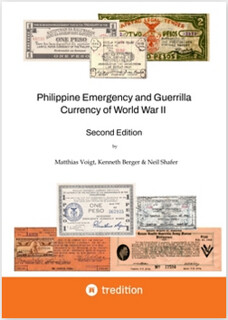 Joel Shafer writes:
Joel Shafer writes:
"I wanted to share how delighted the Neil Shafer family is with the publication of the updated "Philippine Emergency and Guerrilla Currency of World War II". Our family is very grateful for Matthias Voigt's and Ken Berger's tireless efforts. My father worked on this project until he physically could no longer do so (up until about two weeks before he passed); this project meant the world to him and hopefully it will significantly further the understanding of this currency."
Ken Berger adds:
"A more detailed write up about Conrad Nielsen appeared in the 7 May 2017 E-Sylum."
To read the earlier E-Sylum article, see:
NEW BOOK: PHILIPPINE EMERGENCY CURRENCY 2ND ED.
(https://www.coinbooks.org/v27/esylum_v27n18a03.html)
CONRAD MOWER NIELSEN (1922-2008)
(https://www.coinbooks.org/v20/esylum_v20n19a13.html)
On Jane MacAdam Freud
Daniel Fearon writes:
"Among the five medals selected for the Numismagram feature, you illustrate the medal of Sisyphus by J. McAdam
. J. McAdam was Jane MacAdam, who died in 2022 aged only 64, the daughter of the artist Lucian Freud and Katherine McAdam, whose name she took until, quite late in life, she added her father's name. She was the winner of the first medal design competition organised by the British Art Medal Society (with a medal of Picasso) and following Lucian's death in 2011, she produced a medal of him from designs and drawings from sittings on which she had been working in the proceeding months. The medal was an edition of just 10. She was associated with and supported BAMS throughout her life. Examples of her wide range of sculpture can be found on the internet. She never ‘traded' on her father's name, nor indeed that of her great-grandfather, Sigmund.
"Jane was a great medallist, sculptor and artist, above all a lovely person."
Thanks. -Editor
To read the earlier E-Sylum article, see:
NUMISMAGRAM MEDAL SELECTIONS: MAY 5, 2024
(https://www.coinbooks.org/v27/esylum_v27n18a17.html)
On Wayne C. Phillips
 Kerry Wetterstrom writes:
Kerry Wetterstrom writes:
"Another great issue of The E-Sylum with another fascinating article by Pete Smith on the Phillips clan. Kudos to you both.
"I knew Wayne Phillips quite well, as he was a regular advertiser in The Celator. As noted by Pete, he was both a collector and a dealer of ancient coins, and was known for his fair dealings. I would see him at the larger coin shows in Southern California, and I remember him introducing me to his father and brother at a Long Beach Expo in the late 1980s.
"Wayne also enjoyed telling people that he lived in Phillips Ranch, California, and would wink if you asked him if it was named after his family. It wasn't."
Thanks. Great hobby history. -Editor
To read the earlier E-Sylum article, see:
CYRUS HAROLD PHILLIPS, SR. (1905-1989)
(https://www.coinbooks.org/v27/esylum_v27n18a15.html)
On the NASC Money Museum
Phil Iversen writes:
"Regarding the recent listing of Numismatic Museums, I am sad to report the Numismatic Association of Southern California (NASC) material was removed from the bank many years ago due to an insurance issue and the material was eventually sold.
The Wells Fargo main headquarters in downtown Los Angeles on Grand Avenue has a wonderful exhibit on the main floor and is open to the public. While working nearby some years ago I looked at the front window display and saw a Wells Fargo employee award medal in the original box, but it was upside down! The medal was given to employees in 1902 who had worked for 50 years with the company (HK-296)."
Pete Smith reports that the Los Angeles branch of the Wells Fargo History Museum is now closed. We reported earlier on the closure of the Philadelphia branch. However, the main San Francisco museum is still open according to its website. -Editor
For more information, see:
https://en.wikipedia.org/wiki/Wells_Fargo_History_Museum
https://history.wf.com/
To read the earlier E-Sylum articles, see:
GOLD NUGGETS STOLEN FROM WELLS FARGO HISTORY MUSEUM
(https://www.coinbooks.org/esylum_v18n05a25.html)
PHILADELPHIA BANK BUILDING COIN SCULPTURES
(https://www.coinbooks.org/v25/esylum_v25n16a07.html)
NUMISMATIC EXHIBITIONS AT U.S. BANKS
(https://www.coinbooks.org/v27/esylum_v27n17a13.html)
August 2024 Higgins Museum National Bank Note Seminar
Curator George Cuhaj writes:
"The Higgins Museum will sponsor a one-day symposium on National Bank Notes on Thursday, August 1st, 2024. Five speakers will be featured, including Joe Boling, Jesse Kraft, Lee Lofthus, Cody Regennitter and Joe Ridder.
"The registration fee will be $75 for participants, with a discount of $10 for members of Central States or the Iowa Numismatic Association. Registration includes morning coffee and a light lunch. The symposium will be held at the Higgins Museum, 1507 Sanborn Ave, Okoboji, IA 51355.
"For additional information contact the museum curator, George Cuhaj at curator@thehigginsmuseum.org."
Sounds like a great event! -Editor
More on George Winckler
"At Julia's prompting, here's a translation of the description of the first medal from the scan provided:
Chapter [or section] VIIII (= 9)
Winckler von Mohrenfelss. [Winckler von Mohrenfels, modern spelling, is the complete family name - it still exists]
N. 1 (number 1)
A single-sided medal, ninth size [presumably this catalog used a size gradation system instead of precise measurements], goldsmith work, of Master Georg Winckler, from the year 1536.
The obverse (V. S. = Vorderseite) shows the left-turned bust of Master Georg Winckler, in profile, with hair cut short, and with cap on head, in traditional damask (?) costume of former style. The legend (Umschrift) beginning upper left reads IORG. WINCKLER.
and beginning lower right .ANNO. M.D.XXXVI (year 1536).
Between the beginning and the end [of the legend], an ornament is to be seen. Outermost is a smooth circle all the way around [presumably of the edge].
"The reverse (R.S. = Rückseite) is completely blank.
"The description of the second medal states that the obverse is exactly like the medal above, and that the reverse bears a coat of arms (described in detail) and a religious legend in caps at the end of the description. I haven't seen fit to translate it as it isn't germane to the woodcarved medal.
"Though the blackletter typeface is relatively easy to read, some of the 18th Century spellings and word usages differ from present-day German: thus some of my translation is guesswork. In particular the underlined, question-marked word damask is likely incorrect for "damascirter," a word for which I could find no other approximation, and which is obscure in this context.
"Certainly these two descriptions and the engraving relate closely to the wooden medal, and differ only in minor detail, e.g. Roman versus Arabic numerals for the year date, and the direction the subject faces."
Thank you. -Editor
To read the earlier E-Sylum article, see:
MORE ON GEORGE WINCKLER
(https://www.coinbooks.org/v27/esylum_v27n18a09.html)
An Appreciation of Paper Money Chopmarks
Joseph Alan Barnosky of
Camden, Michigan writes:
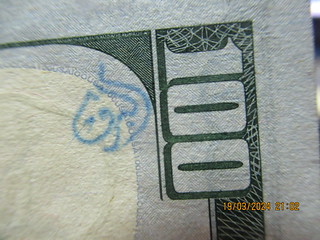 "As usual, when I get around to catching up on my E-Sylum readings I had multiple issues to get through before I could reply knowing it wasn't rehashing someone else's commentary. So this remark is probably a little beyond timely, but still I thought it worth mentioning.
"As usual, when I get around to catching up on my E-Sylum readings I had multiple issues to get through before I could reply knowing it wasn't rehashing someone else's commentary. So this remark is probably a little beyond timely, but still I thought it worth mentioning.
"I do appreciate knowing of Mr. Ratnatunga's interest in the topic area. Some of us have come to numismatics from some pretty low states of awareness and the business of chop marks sometimes might have much to do with goings on in less than perfect market conditions. Though these things aren't the usual day-job quest of numismatists, imperfect market conditions have, at least once, been the stuff of a Nobel Prize.
"It's a difficult topic to write or even speak of as the bud-nipping that goes on even amongst those who should be entirely comfortable with their freedom of speech is amazing. Like activities, if referred to under the topic matter of "false coin" were of little documentation as far as I could find.
"As usual, spiritual matters are difficult to speak of, but the liberating power of trade is really as important as the purchasing power of trade. Calling them "chopmarks" is one way to treat such tangentia matter-of-factly and avoid the value judgments associated with false coin rhetoric. I appreciate that.
"Still, it seems like a thin ice to use the column inches of numismatics for these concerns. I am not unable to accept summaries such as "post-mint", but I do care and wanted to mention I share his concern to some extent, that extent being as intense as need be to anything that can impede my trade settlements at a spiritual level.
"It shouldn't be relevant, but as I often find myself saying "This is Joe on the Shouldn't-Matterhorn."
"It's good to know someone else out there notices these things."
Thanks. No numismatic nits are too small to escape notice at The E-Sylum. -Editor
To read the earlier E-Sylum article, see:
MORE CHOPS ON MODERN U.S. PAPER MONEY
(https://www.coinbooks.org/v27/esylum_v27n12a15.html)
Beirut-Rafic Hariri International Airport Medal
Judy Blackman writes:
"This is an art medal to commemorate the opening of the Beirut-Rafic Hariri International Airport on the 23rd of April 1954. The medal is 75 mm in diameter, weighs 260 g (very heavy!), and is bronze. I was only able to find one other medal on the Internet and it was gilded with much of the gild wearing off on one side. I reached out to some numismatists who I consider experts in art medals, but without any luck. I'm trying to find out who the artist(s) were. What mint struck the medals. How many were made and in what metal compositions.
I'm hoping one of our readers might have some research on this piece. It's very important to me to know who the artist(s) were and what the interpretation was of their vision and why. For example, why was Europa on the bull (Zeus) put on one side? The other is a map of Lebanon showing the airport near Beirut with one plane descending to land at the airport, and another plane climbing presumably having just taken off from the airport. Thank you in advance for any help that is given."
Can anyone help? This could be a tough one. -Editor
To visit the airport website, see:
https://www.beirutairport.gov.lb/
Charity Donation Badges
Gary Oddie writes:
"The final entry of the April 21, 2024 issue was a link to a button museum. This reminded me of a few pieces in my own collection. There is no prize for guessing the reason for the Tasker Oddie badge, but then there is a whole world of charity donation badges, mostly from Australia, which are in my shilling collection, dating from the 1920s-60s. All products of their time and small pieces of social history."
Some great buttons! Thanks. -Editor
To read the earlier E-Sylum article, see:
THE BUTTON MUSEUM
(https://www.coinbooks.org/v27/esylum_v27n16a30.html)
BOULTON & WATT 250TH ANNIVERSARY
Laurence Edwards of the Chicago Coin Club submitted this reminder of a significant numismatic anniversary. Thank you! -Editor
James Watt left Glasgow – he had worked as a technician at the University of Glasgow -- in May of 1774 and arrived in Birmingham on the last day of that month – so, almost exactly 250 years ago! The engineering genius of the Scottish Enlightenment shook hands with Matthew Boulton, one of the pioneers of English industrialization.
James Watt is the more famous name – well-known to anyone who has ever checked the brightness of a lightbulb. Watt did not invent the steam engine, but improved it in ways that made it central to the Industrial Revolution.
Matthew Boulton was not only a businessman and industrial innovator. He was part of a circle of intellectuals – the Lunar Society, that met monthly to discuss wide-ranging topics. Members included Joseph Priestley, Josiah Wedgwood, Erasmus Darwin. Boulton might have led the life of a gentleman of leisure, thanks to inheritances, but he had idealistic notions of business:
I am partial to trade in as much as it extends a man's powers of doing good and I would rather be distinguished as the greatest Manufacturer in Europe than as a Count of the Holy Empire.
Anyway, Watts's steam engine and Boulton's business ambition would eventually revolutionize the manufacture of money.
The best book on the numismatic history of Boulton & Watt:
Richard Doty, The Soho Mint and the Industrialization of Money (Smithsonian, 1998)
Also excellent:
Sue Tungate, Matthew Boulton and the Soho Mint: Copper to Customer (Brewin Books, 2020)
VOCABULARY TERM: PLAQUETTE
Here's another entry from Dick Johnson's Encyclopedia of Coin and Medal Terminology. -Editor
Plaquette. An art relief smaller than eight inches (or more precisely, 20 centimeters), which bears a bas-relief design. While plaquettes are usually considered square, rectangular, or nearly so, they appear in a variety of shapes, and can be somewhat more creative with silhouetted, open work, sunken relief, or other sculptural techniques. Plaquettes do not share the restrictions of a round medallic item. In effect, plaquettes are the most artistic – and because they can be easily mounted – the most utilitarian form of medallic art.
Unlike plaques, which are always uniface and larger than eight inches, plaquettes occasionally have a reverse design, particularly those that are diestruck since they are struck with two dies. Otherwise plaquettes have been made by every method that can reproduce a bas-relief design: many forms of casting, electroforming, repoussé, niello, and forging.
But the casting technique, most often used in making early plaquettes, is in continuous use to the present. By making a negative wax impression from a model, pattern, or even an existing plaquette, it could then be cast in the positive. This would usually be cast in bronze. Infrequently, however, plaquettes were made in silver or lead – and much later – in iron, white metals, aluminum, and in the Orient, in pot metal.
After casting, the items were often chased, casting imperfections removed and detail sharpened, termed cast and chased. Most relief items were given a patina, or, infrequently they were gilded or silverplated. The makers were the same artists that made medals, undoubtedly because of their experience working in bas-relief and casting in bronze. For collectors and curators it is necessary to determine the state of the casting, whether a plaquette is a contemporary cast, or a second or subsequent generation. Like cast Renaissance medals, a plaquette must be accurately measured to determine this state (see shrinkage).
In modern times the relationship between plaquette and plaque is more than incidental. Plaquettes have, in fact, been reduced from the same model used for a plaque. A dieshell is made from the model or pattern which is then pantographically reduced to cut the plaquette die; meanwhile that exact same pattern can then be used to make the plaque the exact size by bronze casting. Often the plaquettes are distributed at the time of the dedication of the plaque after it has been installed.
Mounting plaquettes. Uniface plaquettes were sometimes intended to be mounted on another surface. Because of their size they could be mounted on furniture, desk boxes, book covers, bases of small statues, other objects where an intimate decoration was required. Or, if not intended to be mounted on a flat surface, plaquettes would be provided with a support on the back to be able to stand upright on a table, mantel, altar or shelf. The pax of the Catholic Church, intended to stand upon the altar, is an example of a plaquette with such a support.
The back of a plaquette was usually left untreated, particularly if intended to be mounted. But just as often it was finished, or a backplate was attached.
History of plaquettes. Early plaquettes were reproduced and this art form spread from their birthplace in Italy – exactly like Renaissance medals – across the Alps to Germany, France, the Low countries and the rest of Europe. Plaquettes may have, indeed, predated the art medal. Some cast pieces in the 12th and 13th century in square or rectangular shape could meet the above definition and be considered plaquettes (particularly those mounted on the bases of statues).
When Pisanello created an entirely new art form in 1439 by casting the first art medal in lost wax, he also set the stage for the development of the plaquette as a separate object made by the same technique. Thus the plaquette closely paralleled the development of the art medal. Certainly the artistic treatment and strongly religious themes were similar for both classes of art objects.
References:
NC5 {1951} National Gallery of Art (Kress collection).
O11 {1944} Middeldorf.
O12 {1959} Salton.
To read the complete entry on the Newman Numismatic Portal, see:
Plaquette
(https://nnp.wustl.edu/library/dictionarydetail/516501)
To read the earlier E-Sylum article, see:
VOCABULARY TERM: PLAQUE
(https://www.coinbooks.org/v27/esylum_v27n18a14.html)
RICHARD W. SUTER
E-Sylum Feature Writer and American Numismatic Biographies author Pete Smith submitted this article on coin business huckster Richard W. Suter. Thanks! -Editor
In the past, The E-Sylum has noted numismatic authors who have been sentenced to prison. The short list includes Dale Estin Birdsell, Walter Breen, Robert Harry Burnie, Charles Lynn Glazer and Frank Albert Lapa. This week another might be added to the list, if his book exists.
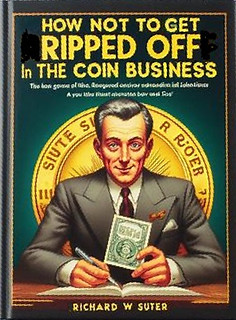 Richard W. Suter was identified as the author of How Not to Get Ripped Off in the Coin
Business. The book was marketed through Suter's National Investment Publication Co. This is
apparently quite a scarce title.
Richard W. Suter was identified as the author of How Not to Get Ripped Off in the Coin
Business. The book was marketed through Suter's National Investment Publication Co. This is
apparently quite a scarce title.
In April of 1973, a Richard W. Suter joined the ANA from Sierra Madre, California as Member R-74189. Another Richard W. Suter joined the ANA in May 1974 as member R-79267 from Chicago, Illinois. In 1981 member R-79267 was expelled from the ANA for failure to fulfill coin orders.
Coin World published a flattering description of Suter in their issue of May 28, 1975:
Mr. Suter is a frequent lecturer on investments or survival and has appeared on radio and
television from coast to coast. He is a contributing editor to Inflation Survival Letter published
by Human Events, America's leading conservative news weekly and a columnist in Inflation
Early Warning System published by The Capitalist Reporter. Mr. Suter is an experienced and
successful commodities trader and rare coin investor.
In 1976, Suter was chairman of the Libertarian Party for Illinois. They promoted lower taxes and less government regulation. Later he was also executive vice president and lobbyist for the National Taxpayers United of Illinois.
In 1976, Suter was a member of the Numismatic Literary Guild. He published two investment newsletters, the National Portfolio Reporter with 500 subscriptions in 1980 and the National Hard Assets Reporter. The Commodity Futures Trading Commission issued his credentials on February 28, 1969, and revoked his credentials as a commodity trading advisor in 1979. That's when his credibility began to collapse.
In 1982, the Security and Exchange Commission also revoked his credentials as an investment advisor. They claimed Suter failed to give refunds as promised in his promotional literature. The SEC challenged his published claim that he had twenty-years experience as a stock market analyst. That would have required him to start at age thirteen.
The SEC questioned his published qualifications, his stated educational background and his claimed success with no documentation of his investments. Suter kept poor records of his subscriptions and income and denied access to his records. The SEC found that complimentary testimonials were given by people who did not exist.
Subscribers complained that he charged for subscriptions multiple times and forged signatures on credit card orders. His bank froze his account after numerous complaints and refunds. Suter was charged with fraud and misrepresentation with his Investment newsletters, Initially there were no charges for numismatic crimes.
He offered investment units in his newsletter offering the profits from future subscription
sales. After Suter was issued a restraining order, he used the name Kenneth Wilson to mail out
another subscription offer to investors. Wilson also offered a Commodity Profit Fund
and
collected $100,000 in investments.
In August 1982, he was indicted by a federal grand jury on 23 counts of mail fraud with his numismatic business. Suter solicited orders, offered to acquire rare coins, evaluate them and ship them to the customer. He in some cases shipped inferior coins and in many cases shipped no coins to fulfill an order. He negotiated the charges down to just two, pleaded guilty and was required to pay $67,830 in restitution.
One week before sentencing, he filed a motion to withdraw his guilty plea. He claimed the record showed he did not understand the charges against him, was not advised of the consequences of his plea and that there was no factual basis for his plea. The court rejected his motion. He filed for bankruptcy but the court also denied that.
In July of 1985, he began serving a year in prison at the federal penitentiary in Marion, Illinois. In December he was transferred to the Metropolitan Correctional Center in Chicago and put into a work release program. He was released from 8 a.m. to 8 p.m. on weekdays and from Friday morning to Sunday evening. He immediately resumed publication of his newsletter and solicited funds through a pseudonym.
This time it was Roy Glenwich of Galaxy Co. offering $1000 shares in a limited partnership. A cover letter offered investors profits of 305% each year.
Richard W. Suter was released from prison in April of 1986 and remained on probation for five years. He was ordered to stay out of the coin business.
The author may have been Richard William Suter, the son of William Albert Suter and Helena Emma Fraatz, born in Miami on March 10, 1948, and died on May 12, 1997.
I found 98 newspaper articles pointing out the irony of the book author being convicted of ripping off people in the coin business. None of those articles suggested that the book itself may have been part of the fraud.
I am distressed that I could not locate a copy. I did not find the record of a sale. It is not available through Inter-Library loan. I checked a bookseller site without success. As a last resort, I called a local library. The librarian consulted all available sources including Worldcat and did not find a copy of the book.
There are two possible explanations. Perhaps the book was distributed in a small quantity and none have made their way into an institutional collection or, the book was a promotional fantasy concocted by Suter. Can any E-Sylum reader locate a copy?
Great challenge. The above book image is a fantasy concoction by Microsoft's Copilot AI tool, with image edits by Pete Smith. -Editor
To read an earlier E-Sylum article, see:
LOOSE CHANGE: MARCH 31, 2024 : Numismatic Investment Literature
(https://www.coinbooks.org/v27/esylum_v27n13a28.html)
MORE ON BLAKE ALMA'S NEW BOOK
Last week we mentioned the new book by Blake Alma of CoinHub. Here's a new press release I came across this week. -Editor
Blake Alma, an acclaimed numismatist and CEO of CoinHub Media, has authored An Ultimate Guide to Selling U.S. Coins and Silver, which is the latest release in "The CoinHub Series." Climbing swiftly to become the number one new release in coins and precious metals on Amazon, this guide offers a wealth of knowledge for turning coin collecting into a profitable pursuit.
Despite being only 23 years old and actively pursuing his studies at Pensacola Christian College, Blake Alma has already made a significant mark within the numismatic community. As the founder and CEO of CoinHub Media, which has generated over $2.25 million in sales since 2023, Alma combines his academic and professional experiences to provide a comprehensive roadmap for both seasoned collectors and newcomers to the coin market. His guide, designed to benefit enthusiasts at all levels, draws on his business acumen and academic insights, making it an essential resource for anyone interested in coin collecting.
The book provides readers with essential strategies for evaluating, marketing, and negotiating the sale of coins. Alma's clear and engaging writing style, which includes a hint of humor, helps demystify complex topics, making the subject matter more accessible and enjoyable.
The CoinHub: An Ultimate Guide to Selling U.S. Coins and Silver also underscores the importance of leveraging modern digital platforms to enhance sales and build community. With a robust online following of 1.8 million across platforms such as Instagram (@coinhubs), TikTok (@coinhub), and Facebook (@thecoinhub), and an active presence on the live video shopping app Whatnot (@coinhub), Alma exemplifies the potential of digital outreach in today's market.
For enthusiasts and collectors looking to deepen their understanding of numismatics or to start their own business ventures, Alma's guide serves as an indispensable resource. More information about his journey, balancing business with his academic responsibilities, and details on how to purchase the book can be found at www.coinhubmedia.com.
As Alma manages his studies at Pensacola Christian College alongside his thriving business, his work continues to inspire a new generation of numismatists, demonstrating that dedication and knowledge can effectively merge one's passion with a successful career.
To read the complete article, see:
Turning Coins Into Cash: Blake Alma's New Guide to Numismatic Success
(https://www.newswire.com/news/turning-coins-into-cash-blake-almas-new-guide-to-numismatic-success-22324094)
To read the earlier E-Sylum article, see:
NEW BOOK: COINHUB GUIDE TO U.S. COINS AND SILVER
(https://www.coinbooks.org/v27/esylum_v27n18a05.html)
HERITAGE AUCTIONS: FROM FAUNA TO FABLES
Heritage published this preview of their upcoming From Fauna to Fables World and Ancient Coins Showcase Auction. Some nice coins here. -Editor
The Animals: From Fauna to Fables World and Ancient Coins Showcase Auction is a specialized Showcase exclusively featuring coinage adorned with animals, both real and mythical. This unique auction spans a broad timeline, offering both ancient treasures and modern marvels, with each piece carefully selected for its depiction of the animal kingdom. Enthusiasts and collectors will have the opportunity to explore a diverse array of coins that demonstrates the development of zoology throughout the centuries. This Showcase promises an unparalleled journey through numismatics, where history, art, and the natural world converge in every coin.
This auction consists primarily of ancient coins, which feature quite a number of mythical beasts. One piece with a particularly full bestiary is an AR shekel or didrachm from Tyre, minted in 335/4 BC. Graded Choice XF 4/5 - 4/5 by NGC, the obverse of this piece features a bearded deity, probably Melqart, riding a winged hippocampus, a creature with the upper body of a horse and the lower body of a fish. Below, in the water, a dolphin is visible. Completing the bestiary on the reverse of the coin is an owl.
Expand your numismatic zoo with these coins:
BRUTTIUM. Croton. Ca. 350-300 BC. AR stater (24mm, 7.62 gm, 7h). NGC Choice VF 5/5 - 4/5. Eagle standing left on olive branch, head raised and wings displayed / KPO, tripod; ? in right field. HN Italy 2172. SNG ANS 360-366.
To read the complete item description, see:
BRUTTIUM. Croton. Ca. 350-300 BC. AR stater (24mm, 7.62 gm, 7h). NGC Choice VF 5/5 - 4/5.
(https://coins.ha.com/itm/ancients/greek/ancients-bruttium-croton-ca-350-300-bc-ar-stater-24mm-762-gm-7h-ngc-choice-vf-5-5-4-5/a/61388-23012.s?ctrack=200071&type=collectorc-coinus-news-tem050724)
THRACE. Apollonia Pontica. Ca. late 5th-4th centuries BC. AR drachm (13mm, 3.34 gm, 4h). NGC Choice XF 5/5 - 5/5. Ca. 480-450 BC. Gorgoneion facing with open mouth and protruding tongue / Inverted anchor; A to left, crayfish to right. SNG Copenhagen 452. HGC 3.2, 1323.
From the James Lomiento, Jr. Collection.
To read the complete item description, see:
THRACE. Apollonia Pontica. Ca. late 5th-4th centuries BC. AR drachm (13mm, 3.34 gm, 4h). NGC Choice XF 5/5 - 5/5.
(https://coins.ha.com/itm/ancients/greek/ancients-thrace-apollonia-pontica-ca-late-5th-4th-centuries-bc-ar-drachm-13mm-334-gm-4h-ngc-choice-xf-5-5-/a/61388-23023.s?ctrack=200071&type=collectorc-coinus-news-tem050724)
PHOCIS. Phocian League. Federal Issue. Ca. 5th century BC. AR obol (10mm, 3h). NGC Choice XF. F-?, head of bull facing / Forepart of boar running right, within incuse square. BCD Phokis 196.3. HGC 4, 1060.
To read the complete item description, see:
PHOCIS. Phocian League. Federal Issue. Ca. 5th century BC. AR obol (10mm, 3h). NGC Choice XF.
(https://coins.ha.com/itm/ancients/greek/ancients-phocis-phocian-league-federal-issue-ca-5th-century-bc-ar-obol-10mm-3h-ngc-choice-xf/a/61388-23032.s?ctrack=200071&type=collectorc-coinus-news-tem050724)
MYSIA. Pergamum. Ca. 180/167-133 BC. AR cistophorus (27mm, 12.64 gm, 1h). NGC Choice AU 5/5 - 5/5. Serpent arising from cista mystica; all within ivy wreath / bow in bow case decorated with aphlaston, flanked by two serpents; ?EPG monogram to left, dolphin left to right. SNG von Aulock 7460. Kleiner 23a.
From the James Lomiento, Jr. Collection. Ex Antiqua, private sale with old dealer's tag included.
To read the complete item description, see:
MYSIA. Pergamum. Ca. 180/167-133 BC. AR cistophorus (27mm, 12.64 gm, 1h). NGC Choice AU 5/5 - 5/5.
(https://coins.ha.com/itm/ancients/greek/ancients-mysia-pergamum-ca-180-167-133-bc-ar-cistophorus-27mm-1264-gm-1h-ngc-choice-au-5-5-5-5/a/61388-23055.s?ctrack=200071&type=collectorc-coinus-news-tem050724)
IONIA. Ephesus. Phanes (ca. 625-600 BC). EL 1/12 stater or hemihecte (7mm, 1.14 gm). NGC XF 4/5 - 3/5, light scuffs. Forepart of stag right, head reverted / Abstract geometric pattern within incuse square punch. Linzalone LN1105. Weidauer 36-37.
To read the complete item description, see:
IONIA. Ephesus. Phanes (ca. 625-600 BC). EL 1/12 stater or hemihecte (7mm, 1.14 gm). NGC XF 4/5 - 3/5, light scuffs.
(https://coins.ha.com/itm/ancients/greek/ancients-ionia-ephesus-phanes-ca-625-600-bc-el-1-12-stater-or-hemihecte-7mm-114-gm-ngc-xf-4-5-3-5-light/a/61388-23075.s?ctrack=200071&type=collectorc-coinus-news-tem050724)
LYDIAN KINGDOM. Croesus (561-546 BC). AR half-stater or siglos (14mm, 5.32 gm). NGC Choice VF 5/5 - 5/5. Croeseid standard, Sardes. Confronted foreparts of lion facing right and bull facing left, each with outstretched forelegs / Two square punches side by side, irregular interior surfaces. Rosen 663-665. SNG Kayhan 1025. SNG von Aulock 2877-2879.
Ex Gorny & Mosch, Auction 69 (18 November 1994), lot 390.
To read the complete item description, see:
LYDIAN KINGDOM. Croesus (561-546 BC). AR half-stater or siglos (14mm, 5.32 gm). NGC Choice VF 5/5 - 5/5.
(https://coins.ha.com/itm/ancients/greek/ancients-lydian-kingdom-croesus-561-546-bc-ar-half-stater-or-siglos-14mm-532-gm-ngc-choice-vf-5-5-5-5/a/61388-23105.s?ctrack=200071&type=collectorc-coinus-news-tem050724)
Wilhelm II 1/2 Mark 1894-A MS64 PCGS, Berlin mint, KM4. Featuring a beautiful and detailed Bird of Paradise, found widely in the southern and northeastern areas of New Guinea. It is the national bird of Papua New Guinea, becoming the official national emblem in 1971 and is found upon the national flag. 'The Kumuls' (translates to Birds of Paradise in Tok Pisnin) is also the nickname of the country's national rugby team.
To read the complete item description, see:
Wilhelm II 1/2 Mark 1894-A MS64 PCGS
(https://coins.ha.com/itm/german-new-guinea/german-new-guinea-wilhelm-ii-1-2-mark-1894-a-ms64-pcgs-/a/61388-23141.s?ctrack=200071&type=collectorc-coinus-news-tem050724)
Vittorio Emanuele III 10 Lire 1929-R MS64 NGC, Rome mint, KM68.2. Edge **FERT** (2 rosettes). Tied with two others within the "Top Pop" grade designation, out of only 15, that has been graded by NGC. Featuring two rearing horses, attached to chariot, driven by the personification of Italy who holds fasces.
To read the complete item description, see:
Vittorio Emanuele III 10 Lire 1929-R MS64 NGC,
(https://coins.ha.com/itm/italy/italy-vittorio-emanuele-iii-10-lire-1929-r-ms64-ngc-/a/61388-23148.s?ctrack=200071&type=collectorc-coinus-news-tem050724)
Bidding for these beasts is ongoing through Tuesday, May 14, when the closing live session is scheduled for 7PM CT.
To view all the lots in this auction, see:
https://coins.ha.com/c/search/results.zx?dept=1909&mode=live&auction_name=61388&type=collectorc-coinus-news-tem050724
HERITAGE MAY 2024 MEDALS & TOKENS SELECTIONS
Here are some selections from the upcoming May 2024 Heritage Medals & Tokens Showcase Auction. -Editor
"Firefighting Competition" gold Medal 1888-Dated UNC Details (Test Cut) NGC, 30mm. 14.57gm. Commemorating the Fire Pump Operation competition of June 10, 1888 at the Ville de Chateauroux. Unawarded.
To read the complete item description, see:
"Firefighting Competition" gold Medal 1888-Dated UNC Details (Test Cut) NGC
(https://coins.ha.com/itm/france/france-firefighting-competition-gold-medal-1888-dated-unc-details-test-cut-ngc-/a/61387-24022.s?ctrack=200071&type=collectorx-img1-coinus-news-tem050724)
Wurzburg silver "Calendar" Medal 1780 MS61 PCGS, Strothotte-1780-3. 45mm. Very Impressive at this level of preservation, wearing a nice opalescent patina and surviving glow.
To read the complete item description, see:
Wurzburg silver "Calendar" Medal 1780 MS61 PCGS
(https://coins.ha.com/itm/german-states/german-states-wurzburg-silver-calendar-medal-1780-ms61-pcgs-/a/61387-24040.s?ctrack=200071&type=collectorx-img1-coinus-news-tem050724)
Charles II silver "Naval Reward & Battle of Lowestoft" Medal 1665 UNC Details (Obverse Scratched) NGC, MI-503-139. 62mm. By J. Roettiers. Obv: Laureate draped bust of Charles II right. Rev: King as Roman general watching naval fleet from ashore. A detailed naval Medal, displaying intricate motifs throughout the design with a pleasing tone over both sides and underlying champagne-orange iridescence.
To read the complete item description, see:
Charles II silver "Naval Reward & Battle of Lowestoft" Medal 1665 UNC Details (Obverse Scratched) NGC
(https://coins.ha.com/itm/great-britain/great-britain-charles-ii-silver-naval-reward-and-battle-of-lowestoft-medal-1665-unc-details-obverse-scratched-ngc-/a/61387-24109.s?ctrack=200071&type=collectorx-img1-coinus-news-tem050724)
"Slave Trade Abolition" silver Medal 1807 MS63 NGC, BHM-627, Eimer-983. 53mm. By T. Webb. WILLIAM WILBERFORCE MP THE FRIEND OF AFRICA Bust of Wilberforce facing right // Britannia seated on a dais, inscribed "I HAVE HEARD THEIR CRY" and attended by Mercury, Prudence and Justice, is crowned by Victory, hovering above; SLAVE TRADE ABOLISHED MDCCCVII in exergue. A beautiful rainbow-iridescent toning is found on both sides, gracing this Choice Mint State specimen. Furthermore, this is the sole "Top Pop" example of the type certified by NGC, out of three.
To read the complete item description, see:
"Slave Trade Abolition" silver Medal 1807 MS63 NGC
(https://coins.ha.com/itm/great-britain/great-britain-slave-trade-abolition-silver-medal-1807-ms63-ngc-/a/61387-24117.s?ctrack=200071&type=collectorx-img1-coinus-news-tem050724)
"Preliminaries of War" silver Medal 1742-Dated MS63 NGC, VvL-168. 49mm. By N. van Swinderen. Obverse: Hollandia stands before a shield and cannon, amidst trophies, Liberty Cap on staff, Stadtholder with cornucopiæ kneels before her, HUIC DEVOTA TUENDÆ, and on a scroll, SECURITAS REIPUBLICÆ. Reverse: a balance weighs an olive branch and a sword, legend in twelve lines, UTRUM / EX AEQUO & BONO / 1742. A Medal that does not come to market often, exemplified by a Choice Mint State grade.
To read the complete item description, see:
"Preliminaries of War" silver Medal 1742-Dated MS63 NGC
(https://coins.ha.com/itm/netherlands/netherlands-preliminaries-of-war-silver-medal-1742-dated-ms63-ngc-/a/61387-24160.s?ctrack=200071&type=collectorx-img1-coinus-news-tem050724#)
Catherine II bronze "Destruction of the Turkish Fleet by Alexei Grigorievich Orloff" Medal 1770-Dated AU58 Brown NGC, Diakov-153.1. 90mm. By J.B. Gass. A highly rare Medal, commemorating the destruction of the Turkish Fleet in the Aegean Sea during the Battle of Cheshme. The reverse features a topographical view of the naval battle with Russian and Turkish fleets in position, ultimately leading to a Russian Victory. It was the greatest naval defeat suffered by the Ottomans since the 1571 Battle of Lepanto, allowing the Russians to control the Aegean Sea for the next five years.
To read the complete item description, see:
Catherine II bronze "Destruction of the Turkish Fleet by Alexei Grigorievich Orloff" Medal 1770-Dated AU58 Brown NGC
(https://coins.ha.com/itm/russia/russia-catherine-ii-bronze-destruction-of-the-turkish-fleet-by-alexei-grigorievich-orloff-medal-1770-dated-au58-bro/a/61387-24170.s?ctrack=200071&type=collectorx-img1-coinus-news-tem050724)
To view all the lots in this auction, see:
https://coins.ha.com/c/search/results.zx?dept=1909&mode=live&auction_name=61387&type=collectorx-2-coinus-news-tem050724
FRANK ROBINSON OFFERS HOLEY COLLECTION"
Holy holed coins, Batman! Dealer Frank Robinson is offering a collection of holed coins. -Editor
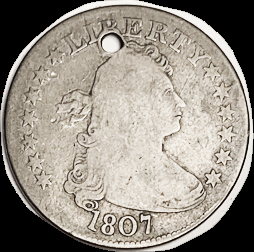 Dealer Frank S. Robinson will conduct a special auction of
Dealer Frank S. Robinson will conduct a special auction of The Holey Collection,
closing June 5, with all holed coins. The sale, with no buyer fee, includes about 270 lots, many of them group lots.
Most coins are from one collector, who seemed to love holed coins. After all, one can get 98% of the coin for, usually, a fraction of the price.
The sale includes U.S. and mostly world coins. One notable item is a U.S. 1822 dime, a very rare date, with a plugged hole.
The catalog is posted at www.fsrcoin.com/holey.html
Lot 18. Dime 1822, RARE!! fairly small & neat plugged hole at obv top, otherwise a very decent G/AG, ltly toned, most of LIBERTY visible. Ex Henry Christensen auc in orig env. (Compare an AG-3 sold for $1440, Stack's 1/24; Fair-2 $940, Heritage 6/16; Holed G $705, Heritage 7/15.)
$400
One must appreciate the marketing tack - 98% of the coin for a (smaller) fraction of the price. Great for pocket pieces as well as collection fillers. I keep a holed 1858 half dollar on my keychain for grins. It replaced an even cooler piece that I lost when it somehow managed to fall off the keyring - a holed Hawaiian quarter. Some future metal detectorist will have fun trying to explain how it ended up on the East Coast.
And one shouldn't laugh - it would have been quite a challenge to locate this many different holed coins without drilling the holes oneself. Individually I'm sure many of these are quite rare with holes, which is what drew me to my holed Hawaiian quarter. I followed a similar off-the-beaten path strategy in assembling my U.S. merchant counterstamp collection - I looked for nice counterstamps on undertypes I didn't already have. Counterstamping small coins is hard, and finding them on tiny coins like three cent pieces and half dimes is a challenge. I also purchased a few counterstamped early dollars that way, paying a fraction of the "undamaged" price. Coins I bought for hundreds of dollars later sold for thousands. -Editor
CALIFORNIA COIN CONTEST COMEDIANS
Everyone's a comedian (or political commentator). California is seeking design ideas for a 2026 quarter, and submitters are taking the opportunity to joke about less commemoration-worthy aspects of the state. -Editor
Paul Horner writes:
"Here is an article on the "Tortured coin designs" for California's innovation dollars - homeless camps, fires, etc."
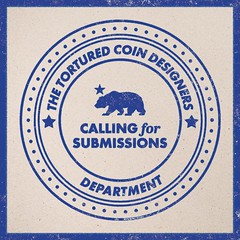
Governor Newsom had kicked of the campaign piggybacking on the title of Taylor Swift's new album release, "The Tortured Poets Department." -Editor
"Calling all members of the Tortured Coin Designers Department," Newsom wrote on social media. "CA is getting its own $1 coin to honor innovation, slated to be issued in 2026 – and we need your help! What is a CA innovation you'd like to see featured on the coin? Send ideas to: coinsubmissions@gov.ca.gov."
California Gov. Gavin Newsom on Thursday asked for the public's help in designing a new $1 coin to honor the state's innovations, but many of the responses pointed to anything but positive accomplishments for which the state was once proudly known.
When people outside California think of innovation, they think of things like Silicon Valley and the tech boom as well as leading the way in wildlife conservation.
But lately, businesses have been fleeing the blue state because of its failure to address crime, homelessness and the escalating cost of living.
Jim Stanley, the press secretary for the State Assembly Republicans, sent his ideas to Newsom with a letter shared by the California Globe, highlighting the governor's accomplishments while in office.
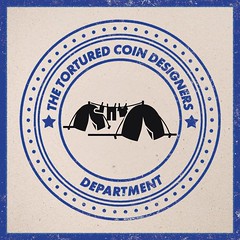 One user superimposed Harvey Weinstein's picture into the coin template provided by Newsom, saying, "When people think of California they think of Hollywood. This would be great. (Hope it doesn't leave a bad taste in your mouth)."
One user superimposed Harvey Weinstein's picture into the coin template provided by Newsom, saying, "When people think of California they think of Hollywood. This would be great. (Hope it doesn't leave a bad taste in your mouth)."
Other users suggested placing illegal immigrants on the coin, high gas prices or someone using drugs.
Newsom's office did not immediately respond to Fox News Digital's request for comment on his request for coin ideas.
To read the complete article, see:
Newsom gets hilarious reality check after turning to public for new state coin design
(https://www.foxnews.com/politics/newsom-gets-hilarious-reality-check-turning-public-new-state-coin-design)
HAYM SALOMON BRONZE MINI-MEDAL OFFERED
A medal commemorating the American Revolution financial hero Haym Salomon is available from the Jewish-American Hall of Fame. -Editor
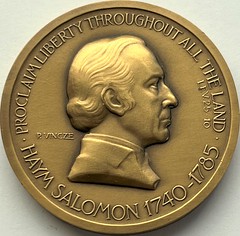 With the 250th anniversary of American Independence coming up in 2026, the Jewish-American Hall of Fame would like to remind everyone of the critical contributions made by Haym Salomon. Salomon was arrested by the British twice as a spy; he was sentenced to death but managed to escape. Afterwards he began working with Robert Morris, the newly appointed Superintendent for Finance, to raise money for the Thirteen Colonies. When Salomon died at the age of 44, his family was left penniless. An 1864 Congressional report recommended that the government appropriate Salomon's son the amount of Government obligations held by his father at the time of his death -- $353,729.43 (approximately 10 million dollars in 2023 dollars). But this did not happen.
With the 250th anniversary of American Independence coming up in 2026, the Jewish-American Hall of Fame would like to remind everyone of the critical contributions made by Haym Salomon. Salomon was arrested by the British twice as a spy; he was sentenced to death but managed to escape. Afterwards he began working with Robert Morris, the newly appointed Superintendent for Finance, to raise money for the Thirteen Colonies. When Salomon died at the age of 44, his family was left penniless. An 1864 Congressional report recommended that the government appropriate Salomon's son the amount of Government obligations held by his father at the time of his death -- $353,729.43 (approximately 10 million dollars in 2023 dollars). But this did not happen.
In 1893, a bill was presented before the 52nd United States Congress ordering a gold medal be struck in recognition of Salomon's contributions to the United States. But it was not approved. The United States issued a stamp in honor of Haym Salomon in 1975. On the glue side this is printed: Financial Hero - Businessman and broker, Haym Solomon was responsible for raising most of the money needed to finance the American Revolution and later to save the new nation from collapse.
Haym Solomon was the fifth person inducted into the Jewish-American Hall of Fame, in 1973. His plaque, sculpted by Paul Vincze, is displayed along with over 50 other honorees at the Virginia Holocaust Museum in Richmond. The Jewish-American Hall of Fame is a division of the American Jewish Historical Society.
Anyone contributing $18 by calling 818-225-1348 will receive a Haym Salomon 22mm bronze mini-medal.
For additional information contact Mel Wacks, Director of the Jewish-American Hall of Fame at directorjahf@yahoo.com.
HONG KONG SMALL CHEQUE
DOLLAR NOTES
Stack's Bowers Director and Senior Numismatist Dr. Kelvin Cheung published an article about the Hong Kong "small cheque" dollar notes. -Editor
Issued by HSBC from 1889 to 1899
Stack's Bowers and Ponterio is pleased to offer an early sneak peek
of highlights from their October Hong Kong Auction – a superb group of high grade One Dollar notes.
The April Hong Kong auction was a phenomenal success with most high ticket items sold and the banknote department hitting an all-time high with sales just exceeding $3.6 million (including the buyer's premium). This clearly demonstrates the strength of our auction in face of an uncertain global economic climate.
Hong Kong banknotes have shown resilience especially among vintage notes, lucky
serial numbers and specimens. We have already taken in good consignments in these areas and will be releasing information on them in the upcoming months. This article focuses on a group of Hong Kong & Shanghai Banking Corporation One Dollar notes that contains the full date run of four notes plus two hand signed signature varieties.
HSBC issued four series of the Dollar notes:
1. Large size cheque
dollar notes with violet reverse issued from late 1872 to 1874.
2. Large size cheque
dollar notes with red reverse issued from 1879 to January 1889.
3. Smaller size cheque
series issued from 1889 to 1899.
4. Minerva
series from 1906 to 1935.
These notes are from the third series and consists of the extremely rare 1889 date, followed by 1890, 1895 and three examples of the ultimate 1899 date. This group is exceptional as the 1889 date is very rarely offered and this example is in solid mid Very Fine grade with fresh inks. The three 1899 notes are exceptional in grade with two examples in PMG 45 and one in PMG 58. These are among the highest grades available to private collectors! Be sure to keep an eye on our blogs and Facebook account over the coming months for further highlights!
For questions relating to our October Hong Kong Auction or to consign your items call +852 2117 1191 or email infohk@stacksbowers.com.
To read the complete article, see:
A Complete Date Run Of The Small Cheque
One Dollar Note
(https://stacksbowers.com/a-complete-date-run-of-the-small-cheque-one-dollar-note/)
D.B. COOPER RANSOM REMNANT SELLS
"D.B. Cooper" is the airline hijacker who famously parachuted into history on November 24, 1971 with $200,000 in ransom cash. He was never seen again. But some of the banknotes were found. A fractional piece of one ransom note was recently sold. Found via News & Notes from the Society of Paper Money Collectors (Volume IX, Number 47, May 7, 2024). -Editor
A remnant of a $20 bank note, part of the $200,000 ransom paid in 1971 to skyjacker D.B. Cooper and later found by 8-year-old Brian Ingram, was notable in Milestone Auctions' May 4 spring discovery military sale, eclipsing its $400/600 estimate to finish at $4,920, including buyer's premium. Ingram famously discovered three bundles of the decomposing currency in 1980 along the Columbia River while on vacation camping with his family near Vancouver, Wash. The Series 1969 $20 Federal Reserve note fragment came with a PCGS Currency certificate identifying the bill. Note fragments with visible serial numbers were traced to the FBI's original listing for the random notes. Additional highlights from this sale will be featured in a later review.
To read the complete article, see:
Remnant Of Skyjacker D.B. Cooper Banknote Nabs Strong Price At Milestone
(https://www.antiquesandthearts.com/remnant-of-skyjacker-d-b-cooper-banknote-nabs-strong-price-at-milestone/)
To read earlier E-Sylum articles, see:
D. B. COOPER CASH STASH FOR SALE
(https://www.coinbooks.org/esylum_v10n06a11.html)
DISTRIBUTION OF THE KNOWN D.B. COOPER BILLS
(https://www.coinbooks.org/esylum_v10n07a16.html)
D. B. COOPER MYSTERY CONTINUES
(https://www.coinbooks.org/esylum_v18n48a43.html)
CERTIFYING THE D.B. COOPER RANSOM BANKNOTES
(https://www.coinbooks.org/esylum_v19n36a20.html)
LOOSE CHANGE: MAY 12, 2024
Here are some additional items in the media this week that may be of interest. -Editor
Here's a new YouTube video showing the cleaning of an ancient coin. What do readers think of this? -Editor
Cleaning a Roman Denarius minted in 69 during the year of 4 Emperor's under the authority of Emperor Vitellius.
To read the complete article, see:
Restoring a Ancient Roman Silver Denarius (69 AD)
(https://www.youtube.com/watch?v=G75pbPVl4hY)
CoinWeek published an article about the Finland-based Coiniverse company and their coin collecting mobile app. -Editor
 Coiniverse Ltd, the company behind the Coiniverse app for coin collecting, has introduced a new NFT-based method to verify the ownership of physical coins. The Finland-based Coiniverse has partnered with Trust2Safe Ltd to be the exclusive provider of Trust2Safe's proprietary technology to both coin collectors and world mints. This method of ownership verification had already been available for all purchases sold within the app's Coiniverse Shop, but it is now being expanded to all coins, regardless of where they are obtained.
Coiniverse Ltd, the company behind the Coiniverse app for coin collecting, has introduced a new NFT-based method to verify the ownership of physical coins. The Finland-based Coiniverse has partnered with Trust2Safe Ltd to be the exclusive provider of Trust2Safe's proprietary technology to both coin collectors and world mints. This method of ownership verification had already been available for all purchases sold within the app's Coiniverse Shop, but it is now being expanded to all coins, regardless of where they are obtained.
While proof of ownership is undeniably valuable, the technology will also allow for the transferral of the NFT confirming ownership to new owners, thus providing another way to verify the provenance of a numismatic collectible and cut down on the potential for fraud online.
Mints will also be able to deploy the technology from their end as well, establishing verification of ownership back to the coin's striking.
To read the complete article, see:
Coiniverse App Introduces NFT-Based Coin Ownership Verification
(https://coinweek.com/coiniverse-app-introduces-nft-based-coin-ownership-verification/)
In the not-just-noodles-anymore department, crypto kingpin Sam Bankman-Fried is learning about the prison economy, telling an interviewer how inmates use bags of rice as currency. -Editor
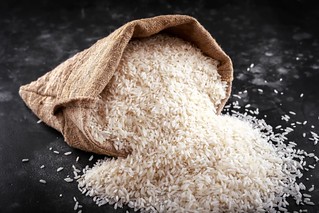 Sam Bankman-Fried has swapped crypto for a new kind of currency behind bars: bags of rice.
Sam Bankman-Fried has swapped crypto for a new kind of currency behind bars: bags of rice.
The disgraced FTX founder has been jailed at Brooklyn's Metropolitan Detention Center as he waits to be transferred to a federal prison to serve a 25-year sentence.
Bankman-Fried was convicted for wire fraud, money laundering and conspiracy last year.
The 32-year-old fallen crypto king said that rice has become one of the currencies of the realm inside MDC,
during his first jailhouse interview, given to Puck News.
The arbitrage opportunities (on rice) in jail were better than anything he experienced trading crypto,
Bankman-Fried told William D. Cohan during the wide-ranging, 75-minute interview published Thursday.
The renowned vegan also said his diet consists mostly of rice and beans.
Bankman-Fried doesn't sleep well, according to Puck, but mostly because people sometimes bug him during the night about those bags of rice, which they intend to use to barter.
To read the complete article, see:
Sam Bankman-Fried says rice is ‘one of the currencies of the realm' behind bars
(https://nypost.com/2024/05/10/business/sam-bankman-fried-says-rice-is-one-of-the-currencies-behind-bars/)
To read the earlier E-Sylum articles, see:
MORE ON NOODLE MONEY IN AMERICAN PRISONS
(https://www.coinbooks.org/esylum_v19n35a42.html)
MORE ON NOODLE MONEY IN AMERICAN PRISONS
(https://www.coinbooks.org/v20/esylum_v20n09a20.html)
AUSTRALIA'S MACQUARIE BANK DITCHES CASH
So. It's finally come to this - one of the world's leading banks has gone entirely cashless. -Editor
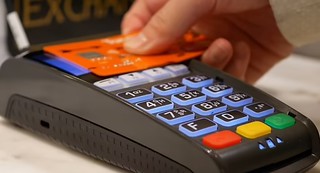 One of Australia's largest banks is ditching cash at all of its branches and shifting entirely to 'digital-only' services.
One of Australia's largest banks is ditching cash at all of its branches and shifting entirely to 'digital-only' services.
Macquarie Bank customers will no longer be able to access over-the-counter services or order new chequebooks from May 20.
The bank's automated telephone banking service and chequebooks for new cash management accounts have already been slashed.
The announcement is the latest hit for those who prefer to pay with cash, to avoid records being kept of all their transactions.
In April, thousands took part in a 'Cash Day Out' protest and rushed to withdraw money from ATMS to protest against Australia's slow but inexorable transition to a digital-only country.
To read the complete article, see:
Macquarie Bank ditches cash at all branches and goes 'completely digital'
(https://www.dailymail.co.uk/news/article-13373571/Macquarie-Bank-ditches-cash.html)
Macquarie's actions follow a trend in the Australian banking sector, as several banks have already taken similar steps. ANZ, a top Australian bank, recently communicated it was also dropping cheque support. Bankwest, another banking institution, decided to go digital only and is prepared to close 45 branches by October.
This digital shift happens as Australian society is dropping cash and going digital. Only 13% of the payments in 2022 involved cash, according to Michele Bullock, the governor of the Reserve Bank of Australia (RBA). Last year, Bullock stressed that 75% of Australian citizens were considered low cash
users. However, Bullock recognized that cash use was still important in certain regions and for elderly people.
To read the complete article, see:
Macquarie Bank to Go Cashless as the Banking Sector Shifts to Digital-Only in Australia
(https://news.bitcoin.com/macquarie-bank-to-go-cashless-as-the-banking-sector-shifts-to-digital-only-in-australia/)
On a related note, Pablo Hoffman passed along this article from The Guardian on the effects of a cashless society. Thanks. -Editor
Businesses should think carefully before refusing cash payments. Governments must ensure that people reliant on cash can continue to use it: in the UK, where thousands of bank branches and ATMs have vanished, the Financial Conduct Authority now has powers to protect access. But even if the supply of notes and coins can be assured, authorities must also ensure that services accept them. The onward march of digital payments won't stop, but cash still counts.
To read the complete article, see:
The Guardian view on the cost of a cashless society: the most vulnerable will pay
(https://www.theguardian.com/commentisfree/2024/may/01/the-guardian-view-on-the-cost-of-a-cashless-society-the-most-vulnerable-will-pay)
HISTORY OF THE ENGLISH DICTIONARY
We love words at The E-Sylum, and bibliophiles (numismatic or otherwise) should enjoy the new Grolier Club exhibit on the history of the English dictionary. -Editor
Samuel Johnson once joked in a letter that dictionaries are like watches, the worst is better than none, and the best cannot be expected to go quite true.
The pugnacious English lexicographer may not be a well-known name, but he casts a long shadow on the current definitions of many words in this article. Hardly Harmless Drudgery: Landmarks in English Lexicography, a fascinating exhibition on view on the first floor of the Grolier Club in Manhattan, presents a detailed 500-year timeline of the dictionary's evolution and its inevitable deconstruction with holdings from several book collectors.
This expansive exhibition of 171 books begins with Renaissance glossaries. These forerunners did not set out to define every known word. Instead, they set a narrower goal of annotating technical terms circulating in particular professions.
The following cases in the exhibition chronicle the slow but steady rise of comprehensive English language dictionaries during the Enlightenment. Rivalries and pedantic snickering often marred these dictionaries, especially in the 19th century. To be fair, these lexicographers were in a double bind, fearing accusations of plagiarism and copyright infringement if entries were too similar, and anticipating vitriol if new definitions went too far and challenged earlier work.
In 1829, for instance, lexicographer Noah Webster flew into a rage, complaining that revisions of his work made him look like someone who had written a first draft of a book with inconsistent and half-baked ideas, requiring experts to come in, clean up the mess, and make it fit for publication.
Although the differences were minute, there was market share to defend — as well as pride. As Jack Lynch, professor of English at Rutgers University and co-curator of the exhibition, explained to Hyperallergic, Noah Webster is a fascinating figure: an American patriot who just missed fighting in the Revolution and a brilliant definer — but also a bad-tempered grouch with the worst business instincts in America. Still, he and the Merriams established the most enduring dictionary franchise in history.
The contemporary influence of even these historical dictionaries is inestimable. In the past five years, according to the exhibition catalog, more than 40% of Supreme Court decisions drew upon definitions from early American dictionaries to elucidate laws.
To read the complete article, see:
Tracing the 500-Year History of the English Dictionary
(https://hyperallergic.com/912138/tracing-the-500-year-history-of-the-english-dictionary/)
For more information on the Grolier Club , see:
https://www.grolierclub.org/
FEATURED WEBPAGE: 19TH CENTURY SILVER INGOTS
This week's Featured Webpage is from the Stack's Bowers Galleries Coin Resource Center on 19th century silver ingots.
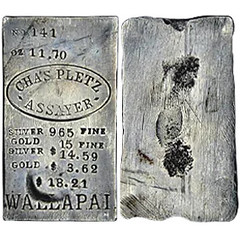 Very little is recorded of Charles Pletz beyond a few bare notices in Arizona's Weekly Miner newspaper of the mid-1870s. The paper's issue of May 14, 1875 notes Pletz as superintendent of the Mass Mine while the following June 4 the paper notes Pletz' interest in mining in the Mineral Park District. For July 9, 1875 the paper stated that Pletz would operate a mining mill at Mineral Park. The issue of October 22, 1875 noted that Pletz had opened an assay office, location not noted. On July 14, 1876 the paper reported that Pletz was to be named supervisor of the Quartz Mounting Mill. On November 17, 1876 the same paper noted Pletz as assistant assayer of the Aztlan Mill and on March 9 of the following year reported that Pletz had sold an interest in the Everett Mine. The last mention of Pletz is a notice in The Miner of November 9, 1932, that describes a place in the Cerbat Mountain where a certain Jack Flynn dug out several hundred pounds of silver ore, samples of which assayed out at Pletz' assay office at more than $3,000 a ton.
Very little is recorded of Charles Pletz beyond a few bare notices in Arizona's Weekly Miner newspaper of the mid-1870s. The paper's issue of May 14, 1875 notes Pletz as superintendent of the Mass Mine while the following June 4 the paper notes Pletz' interest in mining in the Mineral Park District. For July 9, 1875 the paper stated that Pletz would operate a mining mill at Mineral Park. The issue of October 22, 1875 noted that Pletz had opened an assay office, location not noted. On July 14, 1876 the paper reported that Pletz was to be named supervisor of the Quartz Mounting Mill. On November 17, 1876 the same paper noted Pletz as assistant assayer of the Aztlan Mill and on March 9 of the following year reported that Pletz had sold an interest in the Everett Mine. The last mention of Pletz is a notice in The Miner of November 9, 1932, that describes a place in the Cerbat Mountain where a certain Jack Flynn dug out several hundred pounds of silver ore, samples of which assayed out at Pletz' assay office at more than $3,000 a ton.
There are only three known Pletz ingots. The ingot from the John J. Ford, Jr. Sale was no. 141. Ingot no. 235 was illustrated in How They Dug the Gold (Arizona Pioneer's Historical Society, 1967). Mr. Ford contacted the bar's owner, a Mr. Milton Singer of Bloomfield, Connecticut in August, 1973, asking, without success as it turned out, if the bar were for sale. In his letter to Singer, Mr. Ford mentioned he knew of one other Pletz ingot, bar no. 141. Nearly five years later, on February 20, 1978, Mr. Ford made a second attempt to buy Singer's Pletz ingot, this time offering $1,000 for it. Mr. Singer again declined to sell the bar, but sent Mr. Ford photographs of it for his files.
Then, on December 17, 1979 Don Kagin received a letter from Mr. Singer asking if there was a Pletz bar in the Clifford Collection. Don forwarded Singer's letter to Mr. Ford, who replied that there wasn't and reminded Singer once again of Ford's interest in buying Singer's Pletz bar. Singer graciously declined once more, but offered Mr. Ford some information that helped locate Pletz' assay office in Mohave County, Arizona. In December, 1984, Singer wrote Ford saying that his son wanted to have the Pletz bar, implying that it was thereafter off the market
, but the bar appeared for sale in John Hamilton's fixed price list offering published in the TAMS Journal in February, 1991. In February, 1993 Hal Birt wrote Ford saying that Hamilton had brought the bar to the recent Tucson show. Its present whereabouts are unknown to the cataloguer and were to Mr. Ford.


